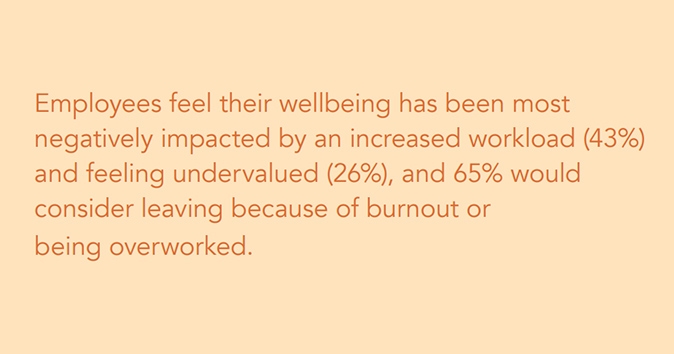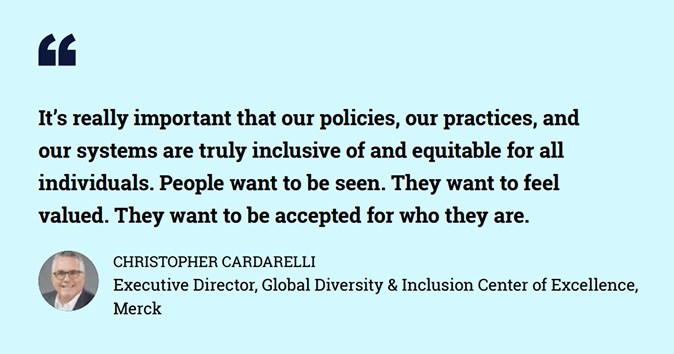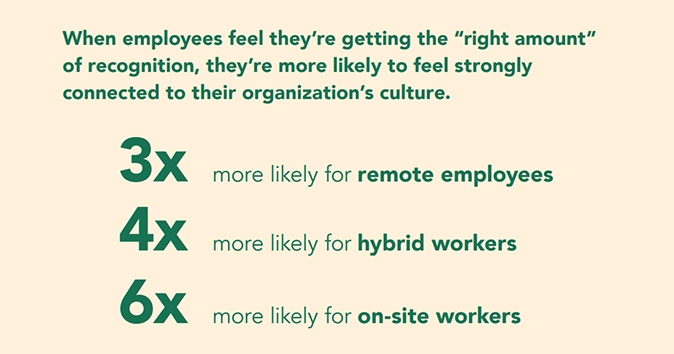People-Oriented Leaders: Tips for Building People-First Leadership
Table of contents
- What does it mean to be "people-oriented" in business?
- What is a people-oriented leadership style?
- What are the qualities of a people-oriented leader?
- How can leaders develop better people-oriented leadership skills?
- What are the benefits of using a people-oriented approach?
- Are there any tips for implementing people-oriented principles?
- Conclusion

In today's rapidly evolving world of work, there are many conversations around effective leadership. In fact, a 2022 Gartner survey revealed that 90% of HR leaders believe that leaders need to focus on the human aspect of work to be successful.
As the walls between home and work crumbled during the pandemic, so did a lot of the walls between managers and their employees. The most effective leadership styles are those in which managers learn to view their employees holistically, as people with rich lives and many responsibilities outside of work.
Employees who feel seen, heard, and respected at work, not just for who they are professionally but for who they are personally, often perform the best in their roles. Because of this, people-oriented leadership is the most effective management style for leaders who want their employees to be happier, less stressed, and more productive.
What does it mean to be "people-oriented" in business?
People-oriented leadership is all about bringing humanity back into the workplaceOpens in a new tab. Being people-oriented in business is exactly what it sounds like creating a culture that values people over profits. This is the opposite of task-oriented leadership, which places a higher value on structure and deadlines than employee growth.
People-oriented companies value the experiences of their employees and invest in their happiness, success, and career growth. They prioritize work-life balance, strong interpersonal relationships, and the well-being of their employees above all else. These cultures also exemplify the importance of respect, recognition, and gratitude.
What is a people-oriented leadership style?
People-oriented leadership could also be called relationship-oriented leadership. It focuses on building strong relationships with employees in order to create a more positive work environment where everyone can grow and flourish. People-oriented leaders prioritize coaching their employees to help them grow, as well as fostering open communication.
This type of leadership style is best for companies that want to have a stronger company culture, as well as improve the quality of their work and their retention rates. People-oriented leaders also know the value of recognition culture and rewarding employees for a job well done.
On the other hand, a task-oriented leader often pushes employees toward burnout, valuing hyper-productivity and "the bottom line" over the health and safety of their employees. These types of leaders are also prone to micromanaging, as they don't trust their employee's decision-making skills, putting them at a disadvantage to truly succeed.

What are the qualities of a people-oriented leader?
While people-oriented leaders in various industries and roles may operate differently, there are a few good people management skills they all have in common. People-oriented leaders are:
- Empathetic
- Empowering
- Collaborative
- Caring
- Approachable
- Positive
- Grateful
- Humble
- Helpful
- Solution-oriented
How can leaders develop better people-oriented leadership skills?
To become stronger, more empathetic managers, leaders can engage in the following activities to enhance their essential leadership skill set:
Mentorships
By partnering with more seasoned leaders, managers can observe how they lead meetings, interact with their employees, and give and receive feedback. This can help them learn to communicate more effectively and remove their egos from their interactions.
Professional development courses
There are many courses available via LinkedIn Learning and many other sites that can help leaders develop a more useful skillset.
Many of these courses may even be covered under employees' professional development allowances, further incentivizing managers to take advantage of these learning opportunities.
Summits and seminars
While allowing managers to travel for leadership conferences and seminars may not be in the budget for every organization, these summits can truly be life-changing for their attendees. These events can help leaders focus on what's truly important in the workplace, honing their managerial styles to be more productive.
What are the benefits of using a people-oriented approach?
Beyond the simple fact that people-oriented leaders have much better relationships with their employees, this type of management style has a myriad of positive effects, including:
Higher job satisfaction
Employees who have better relationships with their managers report better job satisfaction and are happier and less stressed to come to work. Positive relationships create a stronger culture that benefits everyone in the company, as it fosters mutual respect and constructive communication.
More room for creativity
When employees feel like they can speak up and share ideas without fear of ridicule, it's more likely that unique, groundbreaking ideas can be generated. When managers are overly preoccupied with doing things "the way they've always been done," they will likely see the same results they've gotten historically, with little room for growth or innovation.
Lower turnover rates
It's often said that "employees don't leave jobs, they leave managers." It's easy to understand why employees who feel valued stay in their jobs longer than team members who are overworked, talked down to, and miserable.
Are there any tips for implementing people-oriented principles?
Develop employee-centric policies
While the autocratic leadership style may have been the norm in the past, managers who operate this way are likely to have employees who resent them and are looking to leave the organization.
Employee-centric policies such as flexible work schedules, wellness initiatives, and professional development reimbursements can create a better sense of work-life balance and help increase employee tenure.
Promote autonomy and creativity
One way to make sure that you have successful managers is to observe how freely their employees speak up in meetings. Are they excitedly sharing new ideas and collaborating with one another, or do they look timid, shy, and like they're holding back?
The best managers are those who allow their employees the freedom to generate new ideas, try new things, and express themselves without fear of negative consequences.
Encourage diversity and inclusion
It's impossible to create a culture that puts people first without making sure that every employee feels safe, welcome, and appreciated. Leaders who promote diversity and inclusion within their teams and organizations have a variety of perspectives to pull from when looking for new, creative solutions.
Strong DEIB initiatives can also help attract younger employees, as Gen Z and Millennials look for these values when job searching.

Prioritize work-life balance
Companies who push their employees toward overworking because they believe it will increase productivity and profits often see the opposite results. This type of management only leads employees to burnout, stress, and faster turnover.
By monitoring employee workloads and supporting a healthy work-life balance, managers can help ensure that their employees experience less work-related stress and can complete their assignments more effectively.
Over time, this will lead to greater job satisfaction and more positive relationships between managers and employees, creating a stronger team culture.
Facilitate team-building activities
The right team-building activities can have a huge impact on communication, workflows, and company culture. By giving employees the opportunity to see one another in new, more personal ways, they can gain compassion for one another, learn to communicate more effectively, and how to be more productive as a team.
Provide recognition
Frequent, well-timed employee recognition can have a massive positive effect on employee morale, productivity, and retention. Expressing gratitude not only for a job well done but also for the personal strengths an employee brings to the team. This can help all involved feel happier, less stressed, and more positive.

Ready to unlock the secrets to meaningful recognition? Gallup's research has identified 5essential pillars for recognition that truly resonate: Fulfilling, Authentic, Equitable Embedded in the culture‚ Personalized. Dive deeper into the importance of authenticity and personalization in this e-book and learn tips for implementing these critical elements in your organization. Don't miss out! Click the link below to download our FREE e-book now and start transforming your workplace recognition game!
FAQs
There are many qualitative and quantitative ways to evaluate the performance of the managers in your organization. Employee Net Promoter Scores (eNPS), pulse surveys, length of employee tenure, company culture, and financial success can all help measure the strength of your leaders.
Conclusion
People-oriented leadership is often the first step to helping your employees feel valued. These strong, capable managers know how to build relationships with their employees, create a positive work environment, and facilitate creativity and productivity within their teams. People-oriented leaders create healthier workplaces where employees can truly flourish and grow.
About the author
Anna Picagli
As an RYT500 yoga instructor and a Reiki Master Teacher, Anna is an advocate for holistic wellness, especially within the workplace. She’s extremely passionate about the brain-body connection and exploring how mental and physical wellness intersect.
Anna has experienced firsthand how chronic stress, overworking, poor management, and other organizational issues can lead to extreme burnout. Knowing the impact that a toxic work environment can have on a person’s body, psyche, and general sense of well-being, she now works to direct others away from facing the same fate.
As Workhuman’s Senior Content Specialist, Anna is a regular contributor to Workhuman iQ reports and aims to create resources that company leaders can reference to help improve their culture and empower their employees, creating healthier workplaces for everyone.
In her free time, she’s an avid solo traveler, a voracious reader, and a seasoned home chef. You can learn more about Anna’s work on LinkedIn or through the Yoga Alliance.